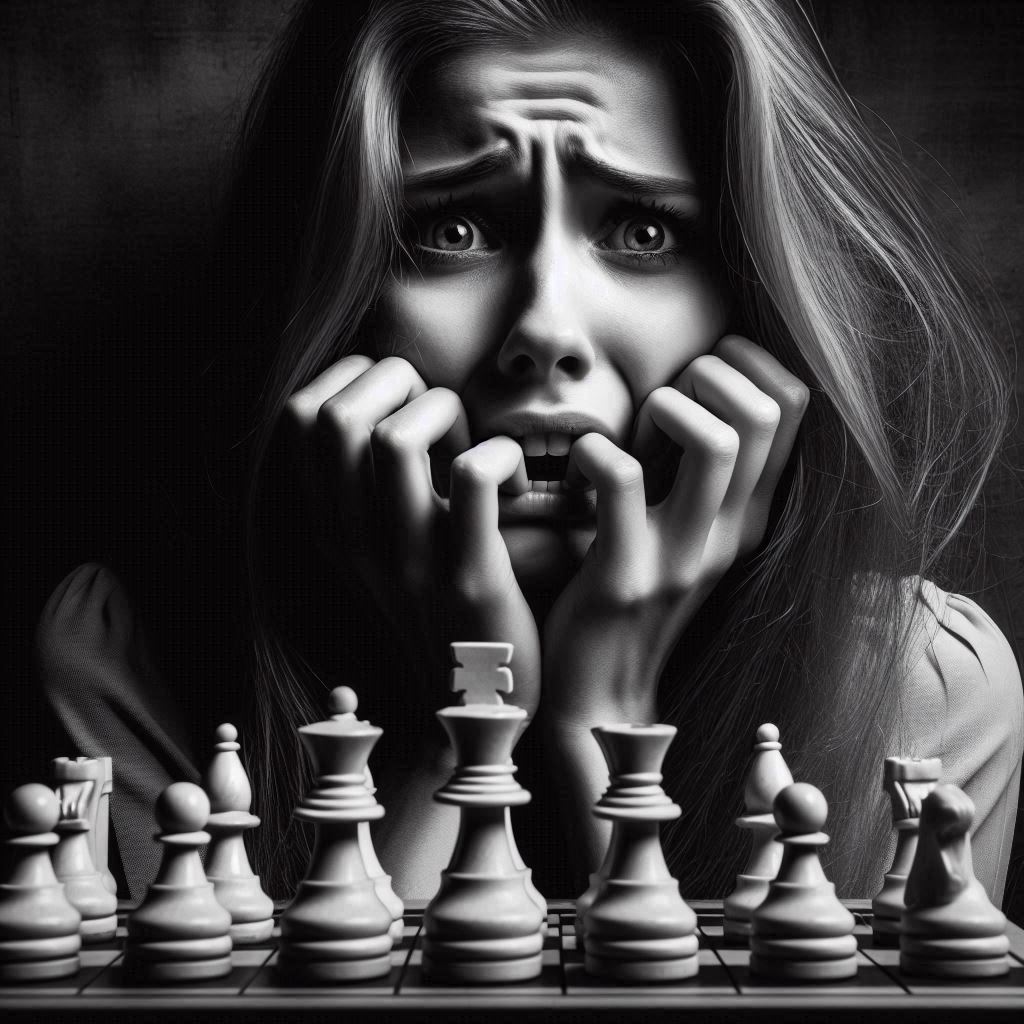Cacophobia is the fear of ugliness, which might sound trivial, but it can profoundly affect an individual’s life. Those who suffer from it often feel anxious in everyday situations, leading to avoidance behaviors and emotional distress.
This psychological condition can have far-reaching effects on mental health, social interactions, and overall quality of life. By shedding light on cacophobia, we can create a more empathetic and supportive environment for those affected. Stick around as we explore what cacophobia is, its causes, symptoms, and potential treatments.
Understanding Cacophobia
Cacophobia is the intense fear of ugliness or anything considered ugly. People with this phobia feel extreme anxiety or discomfort when faced with something they perceive as unattractive. This isn’t just a casual dislike for something that looks bad. It’s a deep-seated fear that can heavily impact daily life. Like other phobias, cacophobia is classified as an anxiety disorder. It affects the person emotionally and sometimes physically, making situations involving ugly things intolerable.
Etymology of Cacophobia
Where does the word ‘cacophobia’ come from? The term is rooted in the Greek language. It combines the words ‘kakos,’ meaning ‘bad’ or ‘ugly,’ and ‘phobos,’ meaning ‘fear’. When you put these parts together, you get ‘cacophobia,’ which literally means ‘fear of ugliness.’ This Greek origin helps us understand the intricate nature of this phobia and why it engenders such a strong reaction in those who experience it. Just like most phobias, understanding its roots can be the first step in overcoming the fear associated with it.
This section has provided a basic understanding of cacophobia through a definition and etymology breakdown. More in-depth discussions on this topic will follow in subsequent sections.
Symptoms of Cacophobia
Cacophobia, the fear of ugliness, can manifest in a variety of ways. It’s not just a psychological issue; it impacts the mind and body alike.
Psychological Symptoms
When someone has cacophobia, it affects their thoughts and emotions deeply. Imagine constantly feeling like you’re on edge. This is what people with cacophobia often go through.
- Anxiety: This is one of the biggest emotional symptoms. People with cacophobia might feel anxious when they think about or see what they believe is unattractive. This anxiety can make it hard to focus and enjoy life.
- Avoidance: To protect themselves from this anxiety, they might start avoiding certain places or people. For example, they might skip social events or refuse to walk through a part of town they find unpleasant.
- Obsessive Thoughts: They might have recurring thoughts about ugliness and how to avoid it. These thoughts can take over their mind, making it hard to concentrate on anything else.
- Low Self-Esteem: This fear can also make them feel bad about themselves. They might start to believe that they too could be seen as ugly by others, lowering their self-esteem.
Physical Symptoms
The mind-body connection is strong, and cacophobia proves this. When the fear takes hold, the body reacts. Here are some common physical symptoms:
- Panic Attacks: These are sudden bursts of intense fear. Symptoms of a panic attack include shortness of breath, chest pain, and dizziness. It can feel like you’re losing control.
- Sweating: When faced with their fear, people with cacophobia might start sweating excessively. This isn’t just normal sweating from a warm room; it’s more intense and can be quite uncomfortable.
- Heart Palpitations: Their hearts might start to race. This can be scary, making them feel like they are having a heart attack.
- Trembling: Along with other physical symptoms, trembling is common. Their hands or whole body might shake when confronted with the subject of their fear.
Summary Table: Psychological and Physical Symptoms
| Psychological Symptoms | Physical Symptoms |
|---|---|
| Anxiety | Panic Attacks |
| Avoidance | Sweating |
| Obsessive Thoughts | Heart Palpitations |
| Low Self-Esteem | Trembling |
Understanding these symptoms can help in recognizing cacophobia in oneself or others. This can be the first step towards seeking help and finding ways to manage this intense fear.
Causes of Cacophobia
Cacophobia, the fear of ugliness, can stem from various sources. Below, we break down three primary causes including genetic factors, environmental influences, and psychological elements.
Genetic Factors
Some individuals may have a genetic predisposition to cacophobia. Just like many other phobias, a family history of anxiety disorders or specific phobias can increase the likelihood of developing this fear. If your parents or close relatives suffer from similar phobias, it could pass down to you.
Environmental Factors
Life experiences and trauma play a significant role. Cultural influences, such as societal beauty standards, can also contribute. Here are a few key aspects to consider:
- Childhood Bullying: Being mocked for one’s appearance early in life can lead to deep-seated fears.
- Media Influence: Constant exposure to and pressure from media showcasing ideal beauty standards can trigger anxieties.
- Cultural Norms: Societies that place high importance on physical appearance can foster an environment where cacophobia thrives.
Psychological Factors
Certain personality traits and existing mental health conditions may exacerbate cacophobia. It’s helpful to understand these psychological elements:
- Perfectionism: Individuals with perfectionist tendencies might have heightened fears of imperfection, including perceived ugliness.
- Low Self-Esteem: A lack of self-worth or confidence can magnify fears of being perceived as unattractive.
- Other Mental Health Issues: Conditions like body dysmorphic disorder (BDD) can often coexist with or lead to cacophobia.
By carefully examining these factors, we can gain better insights into how cacophobia develops and persists.
Diagnosis of Cacophobia
Cacophobia, the fear of ugliness, is a specific phobia that can be debilitating for those affected by it. Let’s explore how mental health professionals diagnose this condition and differentiate it from other similar disorders.
Diagnostic Criteria
Mental health professionals use specific criteria to diagnose cacophobia. It’s essential to identify these to provide the right care and support:
- Intense Fear: The person experiences an overwhelming and irrational fear of ugliness. This fear is often disproportionate to the actual situation.
- Avoidance Behavior: Individuals tend to avoid situations, places, or even people they perceive as ugly. This can interfere with their daily lives and routines.
- Physical Symptoms: Common symptoms may include shaking, sweating, heart palpitations, and shortness of breath when exposed to triggers.
- Duration: The phobia must have persisted for at least six months, causing significant distress and impacting the person’s social, occupational, or other areas of functioning.
- Awareness: The individual is often aware that their fear is excessive but feels powerless to control it.
These criteria help professionals identify cacophobia and differentiate it from other less intense fears or discomforts related to visual aesthetics.
Differential Diagnosis
Distinguishing cacophobia from other specific phobias and anxiety disorders can be challenging. It’s crucial to understand the unique characteristics of cacophobia compared to similar conditions:
- Other Specific Phobias: Unlike cacophobia, which is centered on ugliness, other phobias may target specific objects or situations (e.g., spiders, heights). The main difference lies in the specific trigger of fear.
- Social Anxiety Disorder: While both conditions involve fear and avoidance behaviors, social anxiety is typically connected to social interactions and fear of being judged, not an inherent fear of ugliness.
- Body Dysmorphic Disorder (BDD): BDD is an obsessive focus on perceived flaws in one’s own appearance. In contrast, cacophobia involves fear related to the perceived ugliness of external things or others.
- Obsessive-Compulsive Disorder (OCD): OCD may include a phobia as part of its symptoms, but it also involves repetitive behaviors and obsessions that are not part of cacophobia.
By understanding these distinctions, mental health professionals can provide more accurate diagnoses and appropriate treatments, ultimately helping individuals cope with and overcome their fears.
Recognizing and diagnosing cacophobia is the first step toward effective treatment and recovery. Stay tuned for additional information regarding the management and treatment of cacophobia in subsequent sections.
Treatment Options for Cacophobia
For individuals with cacophobia—a fear of ugliness—finding the right treatment can significantly improve their quality of life. Various methods can help manage and reduce the symptoms of this phobia.
Cognitive Behavioral Therapy (CBT)
Cognitive Behavioral Therapy (CBT) is one of the most effective treatments for cacophobia. This form of therapy helps patients reframe their thoughts and manage their fears. Here’s how it works:
- Identify Negative Thoughts: The therapist guides the patient in identifying the irrational or harmful thoughts contributing to their fear. These include over-generalizations, catastrophic thinking, and other cognitive distortions.
- Challenge and Reframe: Once identified, these thoughts are challenged and replaced with more rational and balanced perspectives. Patients learn to see the feared stimuli differently, reducing the intense fear they associate with ugliness.
- Behavioral Techniques: CBT also involves teaching coping strategies and techniques. These can include relaxation methods, mindfulness exercises, or gradual exposure to feared stimuli. These techniques help individuals gain control over their responses.
Exposure Therapy
Exposure Therapy is another proven method to treat cacophobia and involves gradually exposing the patient to the source of their fear. The goal is to desensitize them over time.
- Gradual Exposure: This process starts with less intimidating exposures, such as thinking about or looking at pictures of what they consider ugly. Gradually, these exposures become more direct and intense.
- Hierarchy of Fears: The therapist and patient work together to create a list, or hierarchy, of fears—from least to most frightening. Starting with the least feared items makes the process more manageable and builds confidence.
- Response Prevention: During exposure, the therapist prevents the patient from using avoidance behaviors. This forces the patient to confront their fear head-on, which can lessen its power over time.
Medication
Medication can also play a role in managing symptoms of cacophobia, although it is often used in conjunction with therapy.
- Antidepressants: Selective serotonin reuptake inhibitors (SSRIs) are commonly prescribed to help alleviate anxiety and depression that often accompany phobias. These medications can help balance brain chemicals that influence mood and fear responses.
- Beta-Blockers: These medications can help manage the physical symptoms of fear, such as rapid heartbeat, sweating, and trembling. They do not treat the psychological aspects but can make it easier to engage in therapy.
- Anti-Anxiety Medications: Benzodiazepines or other anti-anxiety medications can provide short-term relief for severe anxiety symptoms. However, they are not typically a long-term solution due to the risk of dependency.
Each treatment option offers unique benefits, and often, a combination of approaches yields the best results. Working closely with a therapist to develop a personalized treatment plan is crucial for overcoming cacophobia.
Coping Strategies for Cacophobia
Living with cacophobia can feel overwhelming, but there are effective strategies that can help you manage anxiety and improve your quality of life. Here are some practical approaches:
Mindfulness and Relaxation Techniques
Mindfulness and relaxation exercises can be highly effective for reducing anxiety associated with cacophobia. When you feel anxious, your body’s fight-or-flight response can be triggered, causing symptoms like a racing heart, sweating, or a feeling of impending doom. Mindfulness practices can help calm these responses.
Techniques to Try:
- Deep Breathing Exercises: Breathe in slowly through your nose, hold your breath for a few seconds, and then exhale through your mouth. Repeat this process several times.
- Progressive Muscle Relaxation: Tense and then relax different muscle groups in your body, starting from your toes and moving up to your head.
- Mindfulness Meditation: Focus on the present moment, paying attention to your breath and letting go of intrusive thoughts. Apps like Headspace or Calm can offer guided sessions to get you started.
By incorporating these exercises into your daily routine, you can manage your anxiety in a more controlled way, giving yourself the mental space to tackle challenges head-on.
Support Systems
Having a strong support network is crucial when dealing with any form of anxiety, including cacophobia. Support can come from different sources: friends, family, and even professional mental health services.
Building Your Support System:
- Talk to Friends and Family: Open up about your struggles. This can help your loved ones understand what you’re going through and provide the emotional support you need.
- Join Support Groups: Whether online or in-person, support groups offer the chance to connect with others who share similar experiences. These groups can provide advice, emotional support, and a sense of community.
- Seek Professional Help: Therapists trained in cognitive-behavioral therapy (CBT) or other therapeutic methods can offer tools and strategies tailored to coping with phobias. Don’t hesitate to consult a mental health professional if your anxiety feels unmanageable.
A strong support system can act as a safety net, making it easier to navigate the challenges posed by cacophobia. Whether it’s leaning on friends and family or seeking professional help, remember that asking for support is a sign of strength, not weakness.
These strategies, when practiced regularly, can make living with cacophobia more manageable, allowing you to lead a more fulfilling and less anxious life. Normalize taking the time to care for your mental health; your future self will thank you.
Conclusion
Cacophobia, the fear of ugliness, is more than just a word. It’s a condition that affects the lives of many people, making daily tasks and social interactions difficult. Understanding this phobia is crucial for both those who live with it and those around them.
Key Takeaways
- Definition and Impact: Cacophobia isn’t just an irrational fear. It’s a serious condition that can affect emotional well-being and social life.
- Symptoms: The symptoms range from mild to severe and can include anxiety, avoidance behaviors, and physical symptoms like sweating and rapid heartbeat.
- Causes: While the exact cause is unknown, it can be linked to traumatic experiences, cultural influences, and sometimes genetics.
- Treatment Options: Treatment is available and effective. Options include therapy, medication, and support groups.
Importance of Seeking Help
If you or someone you know is dealing with cacophobia, seeking help is vital. Professional guidance can provide the tools needed to manage and overcome this phobia.
- Professional Help: Therapists and counselors specializing in phobias can offer tailored treatments.
- Support Networks: Joining a support group can provide comfort and understanding from those who share similar experiences.
Understanding and Empathy
Being empathetic and educated about cacophobia can greatly support someone dealing with it.
- Be Supportive: Simply being there and showing understanding can make a world of difference.
- Stay Informed: Continuously educating yourself on mental health topics helps foster a compassionate community.
Remember, recognizing the presence of cacophobia and advocating for treatment and support can transform lives. It’s not just about acknowledging the phobia; it’s about taking meaningful steps to support those affected by it.








